Play Impressions (And the Rest #1)
April 18th, 2009

2009 is my final year of playing the role of student chump, before too long, life will force me to man up and join the world’s diminishing work force. For these reasons I want 2009 to best be remembered as the last year of my youth and to fulfill this aspiration I plan on consuming and creating a hell of a lot of media before my leisure time is sacrificed to the man.
The following selection is of surplus titles I’ve completed in the past 2 months which actually haven’t seen coverage on my blog. Looking at the number of games and discussion topics I have for each, I’ll likely have to chunk this out over several posts.
Flower
No, it didn’t make me cry, but it sure was a lovely featurette of a game. Much like thatgamecompany’s previous effort fl0w, Flower is a game with elegant mechanics, whimsical aesthetics and an engrossing musical score. The two games share a common ground in that they’re primarily centred around the concept of kinetics and movement. In fl0w you controlled a small, organic life form in a sea of solid colour, in Flower, the pond is replaced with open fields of grass and flowers yearning for life. You’re a pettle caught in a gust of wind which you steer with the six-axis motion control and accelerate by holding any of the buttons. Touching lifeless flowers bred-crumbed throughout the environment springs them to life, where pollinating a complete field is usually the goal of the game.
The motion controls work beautifully, previously when I’d used the six-axis in other games, I always felt that the controller couldn’t pick up anything beyond shaking, but Flower executes without a hitch, giving me unexpected faith in the motion control.
Like fl0w, Flower has no tutorial except an icon indicating that you ought to try rotating the controller. The premise is just that simple, you’ll probably never notice the exclusion of tutorial, or text for that matter. Besides the title and credits, Flower has no text to it, yet communicates a quaint, eco-friendly narrative through the use of in-game presentation and some light landscape scenes sliced before each level. The powerful message narrated by minimalist presentation and mechanics is the single greatest merit to the game.
(And here’s the part that everyone missed when they were busy writing their personal anecdotes and love letters)
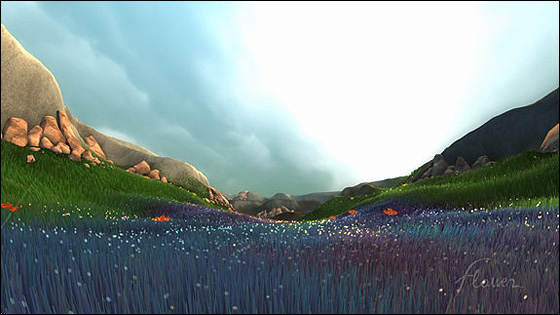
By controlling nature itself (the wind, not the pettle) you’re breathing life into a dry environment, which I found very empowering. As though my play is doing a good deed for mother nature, this obviously makes me feel special. Flower achieves this through clever use of visual and aural design. An environment begins in a lifeless state, weak hues, dry colours and an empty wind all express this. Your pettle then becomes something of a paint brush as you begin to colour in the environment. Others have said that Flower has apt level design, I disagree, rather I think the use of contrast used to lead your eye is what makes the navigation so breezy. The colour is aided by the geography of the landscape which is also used as visual hints to point you in the right direction. If you’re ever stuck, follow the natural topography of the landscape. In order to navigate the rolling fields, curling crescents, the player needs to trust the visual aura of the landscape (and to a lesser extend the aural and design) . It’s this constant reliance on landscape (the game’s sole protagonist) that allows Flower to suck you into the narrative and atmosphere. You feel at one with nature and hence when the later stages show the protagonist on the cusp of death (again, highlighted through design; unsaturated colours, soleless music, dangerous hazards), the emotional strings are pulled (if they weren’t already tugged by the general whimsy, feel good nature of being a servant to mother nature). When you push through those darker stages, the game reveals itself again with an exhalation of hope and the music steps up like the song of tweeting birds. The light piano keys and momentum of the soundscapes also play an enforcing role in Flower‘s suction. The aural mood winds up and works down in tandem to the momentum of the play. This is most apparent in the final level. The effect the mechanics bear on all this is self explanatory; using the motion control is suitable and liberating, aiding the vibe of the game. It’s the presentation that is the draw card though.
The game has a few slight design issues, where it can occasionally be difficult to tell where the next marker is as it’s either absent or too far away to be visually distinct. Some of those darker levels tend to be weaker, again mainly due to the less distinct visual cues. The credits also go on for far too long I think, minor quibble perhaps.
Not a negative criticism, but this is the type of game that feel like completing only once. Due to the length of the game, finishing it was similar to watching a movie; there’s no need to revisit the material so quickly. Lastly, I find it interesting how Flower was influenced by Jenova Chen’s experience of moving from Shanghai; a concrete jungle.
You can download Flower from the Playstation Store.
That gamecompany Flower website (videos, additional screenshots and information).
Kirby 64: The Crystal Shards
Kirby 64 is a simple game as well, but unfortunately its simplicity is to the game’s detriment. A 2.5D platformer, Kirby‘s worst asset is the blindingly slow pace. Kirby’s default walk is painfully slow and his (ultra cute) run isn’t much faster. This is exacerbated by a camera that always seems to be creeping ahead of you. As you’re making your way through a stage with all the haste you can muster, the camera will begin to curve, hindering your foresight and giving lead way to what’s behind you There’s almost no reason for the camera to over work, as there’s never anything worth thinking about behind you. It’s more of a minor pest though, ironically, since it’s difficult to mess up with Kirby’s slow walk no matter what is shown in front of you.
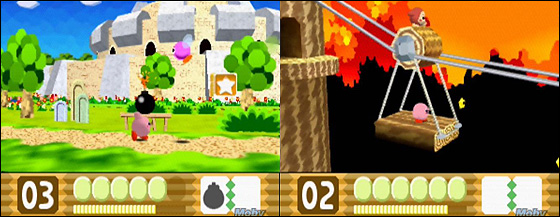
Otherwise you can combine your absorbed abilities with others to create mixed abilities. It’s a worthwhile inclusion, but you never seem to have the right ability at the right time. In fact some of the crystal shards require you first to take an ability from another stage and then enter X stage to combine that ability with another, allowing you to reach the shard. Such long-winded requests of the player are simply uncalled for.
Kirby 64 is broken up into six planets each containing several levels with 3 shards (beginning, middle and end) hidden away in each. You can complete the game without collecting all of the shards if you wish.
The presentation of Kirby 64 is no frills, not particularly interesting despite the Kirby staples. The ultra cute characters and cutscenes are the biggest grab by far. Wow, this series just nails cuteness and Kirby 64 doesn’t let up in that department. Overall though, I find this one a little difficult to recommend.
You can download Kirby 64: The Crystal Shards on the Wii Virtual Console
Kirby 64: The Crystal Shards on MobyGames
Angry Fan Culture Rant #1 (of probably many)
April 15th, 2009
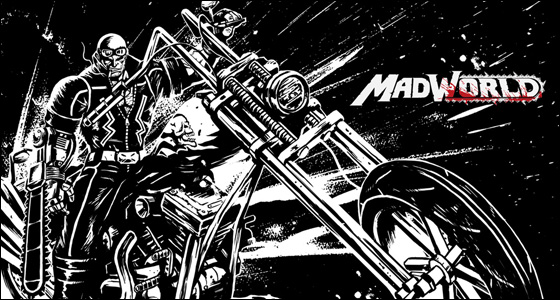
Juvenile violence; see the Wii is full of mature games
I don’t do it often, but this is an angry rant at disobedient fans who deserve nothing more than my angry rant hatred. Sorry, I try to keep angriness to a minimum here, oh well. I’m just as bad. By the way, being angry means that I don’t need to provide referential proof on any claims I make, so just trust me.
Fan cultures are marvelous things aren’t they? As much as we might deny it, we all belong to certain membership groups of fan culture. I think part of the denial for some people (myself included) is a fear of the connotation surrounding these beastly cultures.
I’m a born and bred Nintendo fan, no denying it. They reeled me in at a tender age and nurtured me into the obedient customer I am today. Yet, I’ll rarely ever claim that I’m with those guys, because honestly I don’t like to be cobbled together with the average Nintendo fan. I can’t stand the folk actually. They’re a cultural identity that feels pushed to breaking point by their masters, the reality and their fandom are at parallels.
I use to think that Nintendo gamers were purist gamers, the kind evangelized by this stupendously biased editorial. Innovation, challenge and righteousness in their gaming mindset were all qualities that any Nintendo fan would testify to at the cusp of the Revolution (reveal of the Nintendo Wii); a time when losses were made and changes were promised by the company. Nintendo gamers were preachers of these lessons, lessons handed down to them during the Gamecube era where Nintendo used such tactics as a form of persuasion to keep fans within the fold (ie. the Nintendo difference). The fans bought the idea of innovation and ultimately threw it back up when they discovered that innovation pushed them outside of their fan culture comfort zone, and as a result we have undeserved backlash at the company. Go on and chase the “casual” crowd I say, at least they’re not hypocrites.
What frustrates me more than anything else is the whining. Constantly complaining that Nintendo isn’t delivering enough to satisfy their bottomless appetites. Yet, if you start asking questions you slowly discovering obvious holes in their argument and in fact in their fandom. Truth is these people (as true of any fan) stay well within their comfort zone. They never go out of their way to purchase anything but a select few qualifiable titles by first party Nintendo and a select number of trusted third parties (the jury’s still out on EA). These people rarely buy Virtual console titles, despite the majority having missed a generation or two of games. They’re not interested in Harvest Moon, Kirby’s Adventure, Adventure Island/Wonder Boy, Ogre Battle, Ristar or any of the niche TurboGrafx shmps. The Virtual Console is a literal goldmine of games that could keep any player invested for months, particularly if they’re willing to open themselves to it to.
The same applies with the general software line up. They’re not interested in games such as Rune Factory Frontier, Bangai-O Spirits, the Art Style games or anything that dabbles in the unconventional. Instead they pin their hopes on titles that mimic the thick headed shooters that overpopulate the Xbox 360 and Playstation 3. Some flag bearers of innovation eh? With that sort of mindset I sure do hope Madworld and The Conduit are enough to keep them busy for a while, before they evangelize another wannabe drop off.
I just don’t get these people, they’re supposive fans yet they’re not interested in going back and fine tuning their (probably) weak collection of retro games, nor will they try something new let alone give Nintendo credit for making millions of average Joes happy. You can see how Reggie has become increasingly more resentful towards this unhappy demograph. I’m sick of talking about it, angry rant over.
Hyper, Print Media and Tips for Survival
April 13th, 2009
(Not that I’m in any position to suggest survival tips to people far more credible than myself)
Coloured with a deep red and strong outlines, and far too slender for its premium price, I almost regret purchasing this month’s (April) issue of long-running Australian video game magazine Hyper, just as much as I regretted the dark chocolate Cherry Ripe that I purchased alongside it. It’s a tough value proposition in this modern age to buy a 100 page spread and a chocolate bar for less than ten Australian dollars. Never mind the chocolate bar, the single magazine (particularly if imported) is usually enough to break that price point.
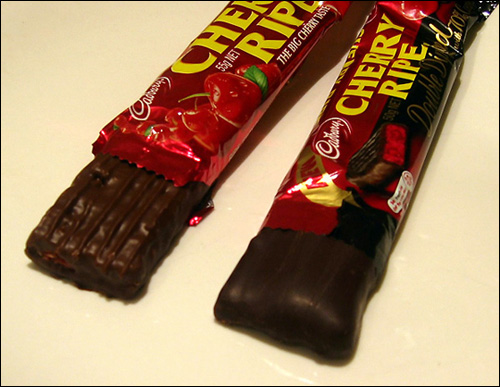
I remember in 2000 when Nintendo Magazine System, Nintendo’s print media authority for Australia, printed an apology regarding a recent $1 price hike – a consequence of confusion regarding the government’s recently introduced goods and services tax. The drama was a little too confusing to pinpoint where exactly the blame lied, but despite that NMS was very transparent on the issue. It was clear that this page, following the news section, was intended to be direct, it’s significance marked with a solid fill black background and white typeface, foot noted with the editor’s signature – this would certainly catch the reader’s attention. Every time an inevitable price hike made the rounds – which wasn’t very often, mind you – NMS‘ team matched the hike with an increased page count and formal notification to the reader. NMS had successfully kept its readers paying less than a fiver for its first four years of publication (1993-1997). The price was one of the magazine’s core assets, so seeing it rise was as much a burden to them as it was to us, it’s as though the writers almost felt guilty for it, expressing genuine empathy and disappointment in such situations. I wonder though, at what ends would such a team justify a steeper price point, a premium, like that of Hyper‘s $8.95 to their readers in today’s climate. I guess perhaps it’s a good thing that they died off early.
This puts Hyper in an interesting position, it’s outlived NMS (been doing so for 8 years now) and is battling through a dreadful climate for all things print media. No doubt the magazine is slowly dying, that much can be assumed of almost all print media, even before you read the magazine*. Whether or not the premium price tag is a hindrance, I’m not sure. It’s more iconic of the desperate situation, me thinks.
I guess it’d be unfair to scrutinize Hyper over its inevitable death, particularly when I just evangelized a magazine wrought in advertorial bias, and (it must be said) a breeding ground for some pretty atrocious fan culture – scan through the reader artwork of Les and Skull’s Mailbag to catch my drift. This article will scrutinize Hyper though and probably quite heavily, because Hyper is frankly good enough that its worth holding onto.
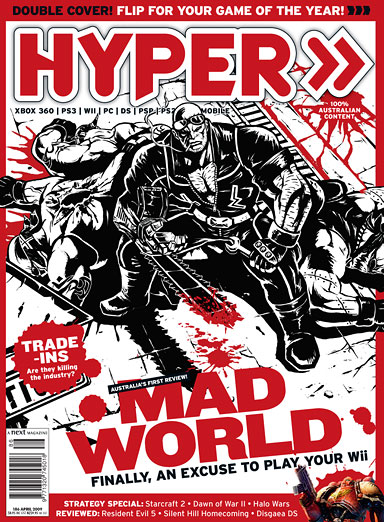
I rarely read the magazine anymore, and rarely read it much to begin with, after all (personally speaking) the UK is the premier place for quality games writing, they’ve just been doing it longer and stronger. It’s the reason why I’d pay a few dollars extra for the inflated cost of an import and to put up with jokes made about cacking one’s pants. Even though I don’t read it (much), Hyper is reputable. It’s important for Australian games writers to have a voice, and for the longest time Hyper has been that voice. Yet the future is undoubtedly dire, the pending death of the print medium and a slow crawl towards change are at halves the causes. Hyper needs to cocoon its future security and repackage its identity, so that it can survive as both EDGE and Retro Gamer have.
Perhaps the worst thing I could lay against Hyper (not that this is an intentional bashing by a narcy blogger kid, I wouldn’t dare to stoop) is Pixel Hunt. Headed up by contributors within the Hyper fold, Pixel Hunt is a free Australian e-magazine which in the past year has managed to reach monthly circulation and a 70 page spread – only 30 odd pages shy of Hyper. It should be noted that the typeface is much larger, but it kinda balances out with large dumps of text filling most pages in contrast to the surprisingly image rich Hyper. The ratios don’t really matter, even if Pixel Hunt is say 1/2-2-3 of the content of Hyper, the price point is difficult to wager against. Pixel Hunt is 100% free, you can go and download it now, go ahead, I recommend you give it a squizz, you can access all the back issues too. The content in Pixel Hunt is significantly more editorial focused, even the typical reviews and previews have been given a more progressive slant, thanks to the some smart thinking on behalf of editor Dylan Burns. It’s not a perfect beast, the large amounts of text can be rather ghastly as with the size of the typeface, also a significant proportion of the editorial and discussion lacks proper critical depth. Still you can’t argue with free, can you? This leads to the inevitable point that when a rogue source, written by writers who also contribute to your news stand magazine are putting out similar dosses of more or less equivalent content for free, your business is no doubt being jeopardized. I’m not saying that Pixel Hunt is trying to steal the reigns of Hyper, any digital games source is doing similar things, rather it serves as a dire warning. As Daniel Wilks suggests in his editorial, print media is too slow for the web, the web, the same medium which serves the enthusiasts that read his magazine (his words not mine). In which case, why bother to compete by mimicking the web Daniel if you’re fighting a battle that you know you’re going to lose? The web has nudged you out of your previously assumed position, you either have to change or face inevitable death – that’s the unfortunate truth. Of course, you don’t need some renegade writer like me pointing that out for you, you’re already much aware.
I wouldn’t have dismissively toned the last point if it wasn’t for the following few paragraphs, and this is where EDGE and Retro Gamer fit in, I referenced these guys for good reason. While readership has waned a little for these magazines (most notably for EDGE for giving so much away free online, yays!), they’re sustainable, sustainable because they’re rich in editorial and feature based content that can only be found in their ink. It’s called incentive. These two outlets provide high quality exclusive content which is not available online, filled with pages of well articulated opinions, critiques, analysis and commentary on games – they’ve always been this way and it’s why they’ve managed to burrow so deeply into their selected niches, and be respected publications for it.
In contrast, Hyper is still front-loaded with the same news, reviews and previews nonsense, and according to Wilk’s editorial, they’re given the higher priority than features. The reviews are well written, always have been, they also exert an underlying sense of Australian ocker while abiding by the norms of the commedic culture created by predecessors like Cam Shea. But are these differences really worth the entry fee?
Hyper‘s content format has changed very little over the years, it’s still news, previews, features, reviews and some editorial asides followed by reader mail and the always interesting GFK sales data. The shift towards individualizing the identity of the magazine hasn’t really happened yet. This isn’t a blame game, as I obviously cannot point at the reasons why Hyper‘s operations are still largely the same as ever, whether it be a conscious decision of the editors or publishers etc. They are serving content that people clearly want to eat, yet many of those people have also already migrated. I imagine then that this is an awkward reality to face. Whatever is going on behind the scenes though, as mention in the reviews editorial, reviews and previews are still prioritized, and to me, that is a grave mistake.
![]()
Conversely, Pixel Hunt, you’ll remember is straying away from this tired formula. In the editorial of issue 5, editor Dylan Burns confirms that the e-mag format simply can’t compete with the by the minute updates of the web, so in order to combat this, he asked his writers to change the nature in which they assess games for the magazine. Subsequently in the next issue not only did these changes take place, but the magazine also was filled with a sizable 30 pages of original feature pieces, including interviews, retrospective and opinion pieces. Reviews are still incremental, perhaps the main component of the magazine, but the way in which they’re conducted is different to convention. All of these examples culminate in a very unique and worthwhile selection of monthly writings. Essentially the magazine is out-Hypering what Hyper ought to be doing in order to survive, it’s almost insulting for the print magazine, and it makes me consider that maybe they deserve their inevitable demise as they lack the forward thinking to write outside of the box. This is why I’m less sympathetic towards the magazine.
Another suggestion for them would be to grow a proper online presence and leverage it for magazine sales in the same vein as the Imagine publishing circle of multiplatform magazines achieved with TotalGames.net. The idea serves both the readers and writers, but it’s perhaps too late. They shouldn’t outsourced their previous attempt at creating a Hyper web portal in the late 90s. Imagine the thought for a second; a fully fleshed out Hyper website with good editorial, slick design and a strong fan base. Would have probably drilled trite Australian fan sites like Aussie-Nintendo, PALGN and Vooks into the ground had Hyper got their act together. Oh well.
I don’t dislike Hyper, and this post isn’t an attempt to ridicule the magazine in any way. As pricey as it may have been, I’ve enjoyed most of what I read (although the trade-in games feature was intentionally very one sided). As I think I’ve well justified, this magazine needs to evolve or continue on a downhill slope of circulation. I guess a good part of my commentary is biased by my lust for a single publication to air critical game discussion, anecdotes and commentaries, and it’d be great if Hyper was that magazine.
The editorial shift would be in their best interests, so long as its gradual, allowing readers to warm into the idea (as EGM were doing on they way out). It cures the need to play catch up with the web and provides greater incentive to readers. Reviews can read more like personal responses, or discussion of the game, rather than evaluation. Maybe drop the price too, I preferred the ol’ $4.95, although, that’s easy for me to say. The Cherry Ripe on the other hand requires a much simpler solution. Half the price and stick it in a refrigerator.
*I haven’t fact checked this at all, like I said, it’s assumed by the price, staff, editorial and so forth. It’s a pretty safe bet to make, but if I’m wrong then please tell me about it.



 Game Design Companion: A Critical Analysis of Wario Land 4 - $7.99
Game Design Companion: A Critical Analysis of Wario Land 4 - $7.99 Level Design: Processes and Experiences
Level Design: Processes and Experiences Speed Boost: The Hidden Secrets Behind Arcade Racing Design - $5.99
Speed Boost: The Hidden Secrets Behind Arcade Racing Design - $5.99 Adventures in Games Analysis: Volume I - $5.99
Adventures in Games Analysis: Volume I - $5.99







